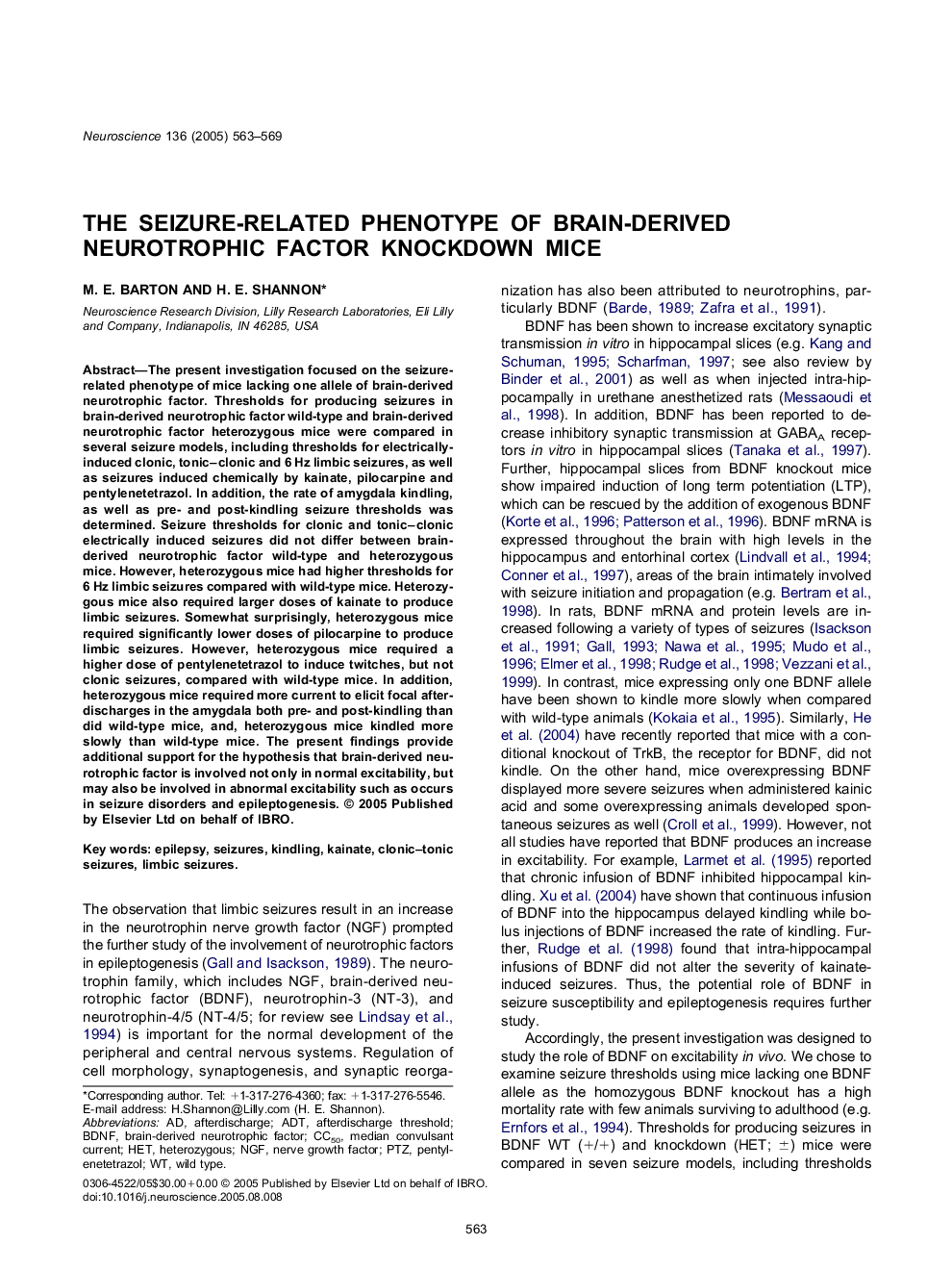| Article ID | Journal | Published Year | Pages | File Type |
|---|---|---|---|---|
| 9425397 | Neuroscience | 2005 | 7 Pages |
Abstract
The present investigation focused on the seizure-related phenotype of mice lacking one allele of brain-derived neurotrophic factor. Thresholds for producing seizures in brain-derived neurotrophic factor wild-type and brain-derived neurotrophic factor heterozygous mice were compared in several seizure models, including thresholds for electrically-induced clonic, tonic-clonic and 6Hz limbic seizures, as well as seizures induced chemically by kainate, pilocarpine and pentylenetetrazol. In addition, the rate of amygdala kindling, as well as pre- and post-kindling seizure thresholds was determined. Seizure thresholds for clonic and tonic-clonic electrically induced seizures did not differ between brain-derived neurotrophic factor wild-type and heterozygous mice. However, heterozygous mice had higher thresholds for 6Hz limbic seizures compared with wild-type mice. Heterozygous mice also required larger doses of kainate to produce limbic seizures. Somewhat surprisingly, heterozygous mice required significantly lower doses of pilocarpine to produce limbic seizures. However, heterozygous mice required a higher dose of pentylenetetrazol to induce twitches, but not clonic seizures, compared with wild-type mice. In addition, heterozygous mice required more current to elicit focal afterdischarges in the amygdala both pre- and post-kindling than did wild-type mice, and, heterozygous mice kindled more slowly than wild-type mice. The present findings provide additional support for the hypothesis that brain-derived neurotrophic factor is involved not only in normal excitability, but may also be involved in abnormal excitability such as occurs in seizure disorders and epileptogenesis.
Keywords
Related Topics
Life Sciences
Neuroscience
Neuroscience (General)
Authors
M.E. Barton, H.E. Shannon,
